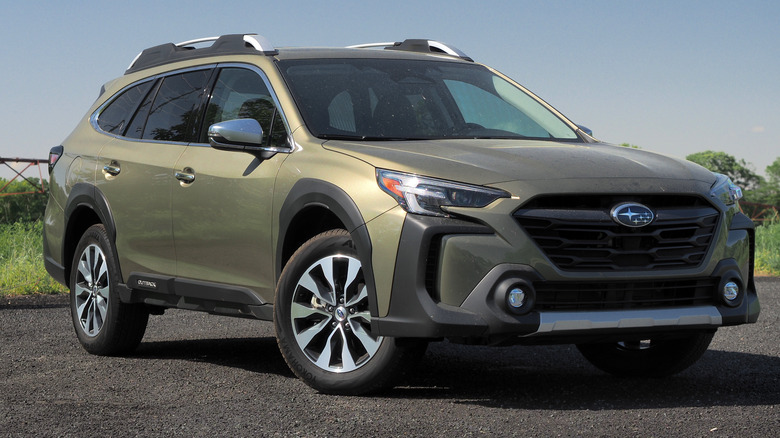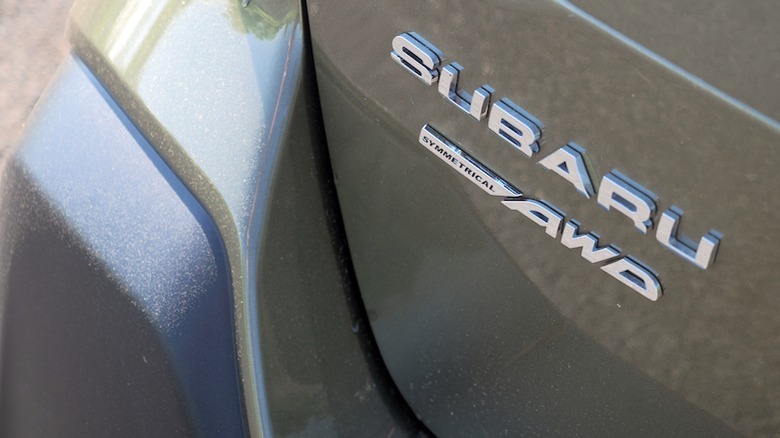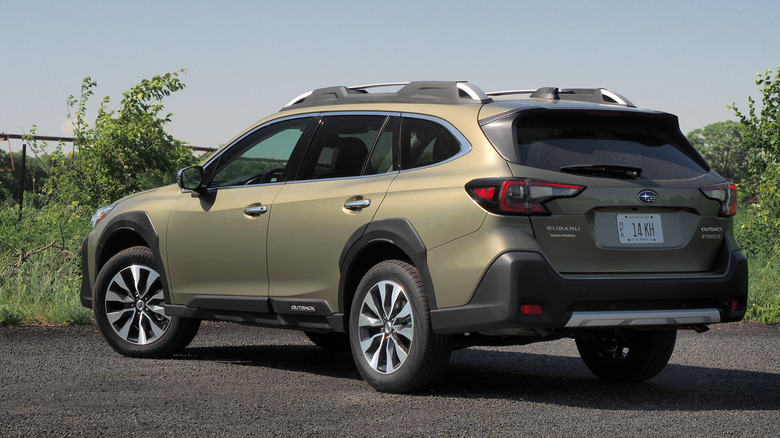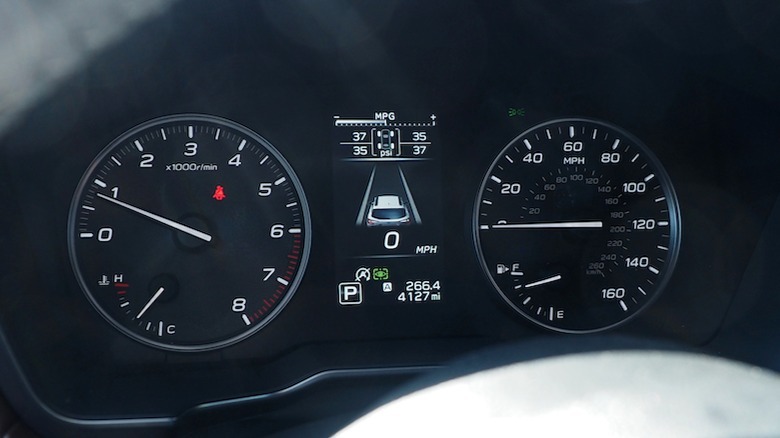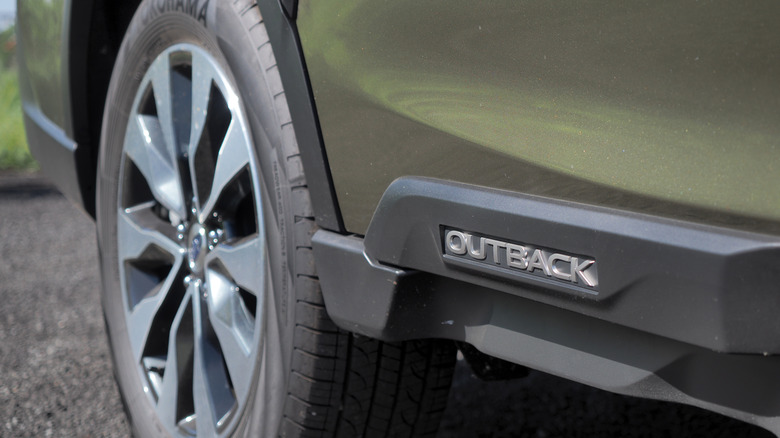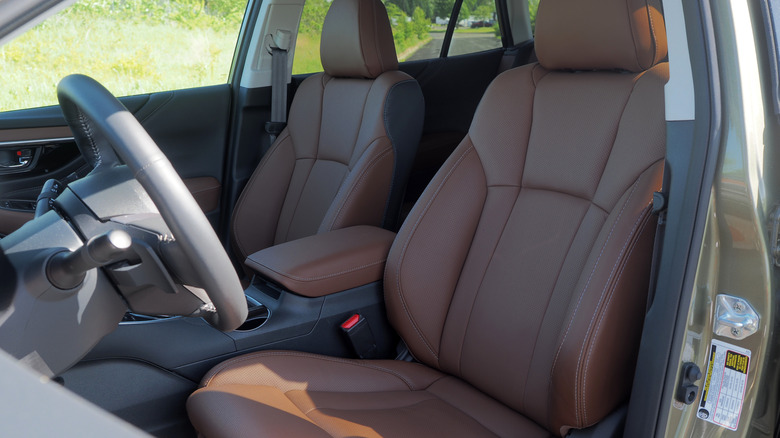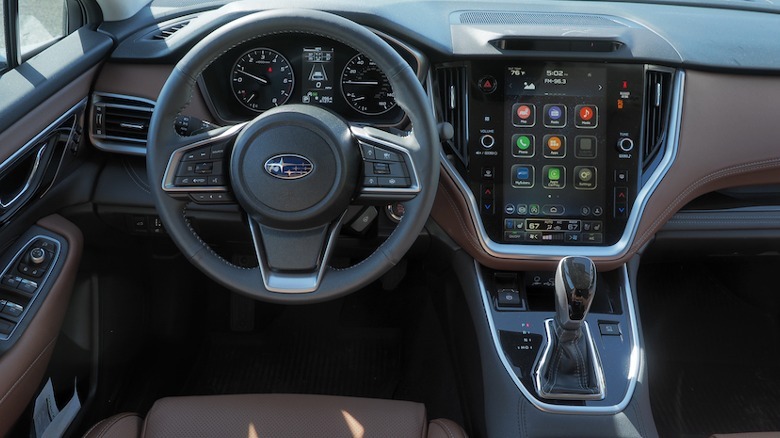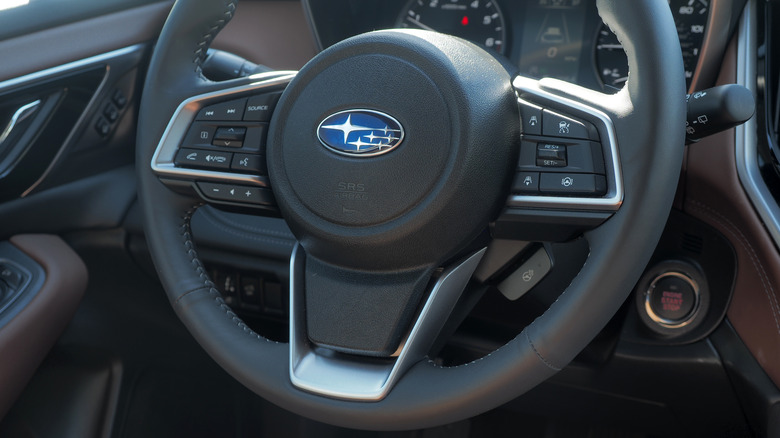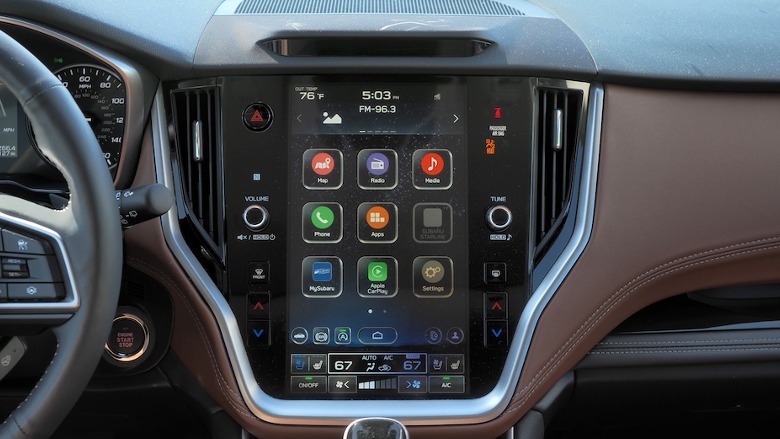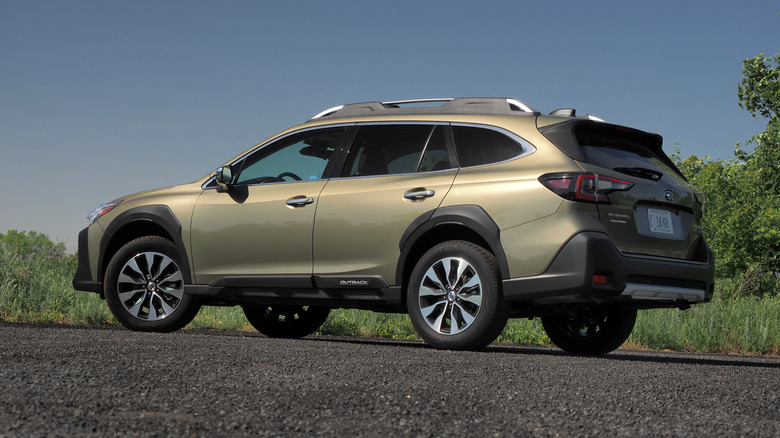If You Want A 2024 Subaru Outback, This Is The Trim To Get
Some days, you'd swear the auto industry had never heard of the adage "jack of all trades, master of none." Amid a sea of SUVs that also claim to be sports cars, the 2024 Subaru Outback's singular focus on practicality instead of performance manages to feel refreshing, not limiting. That said, like all automakers, Subaru doesn't stint when it comes to Outback trims.
Ownership kicks off at $28,895 (plus $1,295 destination), and officially — or at least as Subaru frames it — the Outback is a midsize crossover SUV. Squint, and maybe you can ignore the fact that it's actually pretty much a wagon, albeit a slightly elevated one. Whims of categorization aside, you're arguably getting the best of both worlds: an SUV-esque 8.7 inches of ground clearance (or 9.5 inches with the $39,960 plus destination Wilderness trim) but a slightly easier-to-load trunk with a power liftgate standard on Onyx Edition trim ($36,105 plus destination) and up.
While — as per other badge-bearers, like the Crosstrek Wilderness – the Outback Wilderness bears the brunt of Subaru's adventures in plastic cladding. Even the flagship Outback Touring XT ($42,795 plus destination) doesn't escape the add-ons. Burly front lower bumper extensions, chunky fenders, big sills, and equally outsized rear plastic bumpers definitely lean into the whole rough-and-tumble aesthetic that Subaru seems to delight in. They're practical, of course, even if the Touring XT's standard 18-inch machine finished alloys look particularly prone to catch curb scars. There's a lot to be said for the Base and Premium's 17-inchers, with their plentiful tire sidewall improving ride compliance.
Two engines but still no hybrid
Outback trims from the Onyx Edition XT ($39,360 plus destination) and up get Subaru's 2.4-liter turbocharged four-cylinder engine, with 260 horsepower and 277 lb-ft of torque. It's paired with a continuously variable transmission (CVT) that does a solid job of not whining, and standard all-wheel drive.
Subaru and the EPA says the Outback's turbo engine should be good for 22 mpg in the city, 29 mpg on the highway, and 25 mpg combined. Sure enough, my own mixed driving landed on 25 miles per gallon.
If you want better economy, and don't mind sacrificing performance to get it, the standard, non-turbocharged 2.5-liter four-cylinder Boxer engine is rated for up to 26 mpg in the city and 32 mpg on the highway. You only get 182 horsepower and 176 lb-ft of torque to play with, however, and the tow rating dips from the turbo's 3,500 pounds to 2,700 pounds.
Surefooted but far from sporting
The turbocharged engine definitely feels punchy, but this isn't a sports SUV, not by any measure. There's no sport mode; Subaru's X-MODE is more concerned with maximizing traction and performance in mud, dirt, and snow. Similarly, Hill Descent Control is standard across the board.
The result is a surefooted SUV, and one which isn't going to detract from Subaru's reputation as the obvious go-to for those in states where winter arrives hard and heavy. Yes, you compromise on fun in order to ensure that reassurance, but I suspect most Outback buyers will be content with that balance.
The same goes for cargo space. The Outback's trunk holds a healthy 32.6 cu-ft, expanding to 75.6 cu-ft with the rear bench folded. There's a useful underfloor storage nook, and a removable tray for keeping smaller items from shifting around, plus multiple bag hooks and tie-down spots. If you thought you needed a pickup truck to be practical, you might need to reconsider.
Fancy doesn't suit the Outback's attitude
In higher trims, the rest of the Outback's cabin isn't quite so practical, if only because the fancy Nappa leather in the Touring and Touring XT (or the regular leather in the Limited and Limited XT) feels a little too nice to risk with mud and ebullient hounds. The water-repellent faux hide on the Onyx Edition, Onyx Edition XT, and Wilderness might be a better choice, while the Base and Premium get sturdy cloth.
All trims bar the Outback Base get an 11.6-inch infotainment touchscreen, a portrait-orientation display that dominates the center of the dashboard. Subaru sprinkles some physical controls around it — like volume and tuning knobs, along with HVAC temperature controls for the dual-zone system standard on all but the Base trim — and there's a dedicated button to summon the camera view, but otherwise everything is navigated through the touchscreen.
Unfortunately, it's not the most intuitive UI. Climate controls are at the bottom in a persistent section, and then there are various status gauges at the top, but all the iconography seems either slightly too small or slightly too large. At least there's wireless Apple CarPlay and Android Auto, for when the sluggishness of Subaru's own interface gets too frustrating.
Plenty of standard safety tech, plenty of annoying beeps
All versions of the Outback get Subaru's EyeSight driver assistance package. That includes adaptive cruise control with lane-centering, lane departure and sway warnings, pre-collision braking assistance, lane-keep assistance, and automatic emergency steering. Blind spot warnings with lane-change assist and rear cross-traffic alert is standard on the Onyx Edition and above, an option on the Premium trim, but sadly unavailable on the Base trim.
It can be a finicky system. The lane-departure detection is quick to yelp — and not always justified — though not as frenetic as the DriverFocus Distraction Mitigation System that's standard on the Touring, Limited XT, and Touring XT. Hyper-attuned to where you're looking, it suffers puppy-like levels of attachment syndrome and rapidly undermines its own usefulness by becoming just another alert sound you ignore.
The safety system's whining is mainly annoying because it gets in the way of the Outlook's primary strength — it doesn't feel obliged to pretend to be something it isn't. Not a performance car in SUV's clothing; not some Baja beast that'll in reality rarely stray from asphalt into a vaguely muddy field. That focus feels unusually fresh in an auto industry where simply doing one thing really well has fallen out of fashion.
The 2024 Subaru Outback trim to choose
If your priorities, then, are sure-footedness, comfort without straying toward the unspeakably lavish, and practicality, then the 2024 Subaru Outback has clear charm. Best, too, to stick to the low to midrange trims. Though a pleasant place to sit, the more expensive Outback grades don't quite resonate with that core message so well.
Were it my money, and my priorities, it's the midrange Onyx Edition XT or Wilderness trims I'd be eyeing. Starting at under $40k, you still get the turbocharged engine but avoid the fancier features which feel like they obscure the Outback's purity of purpose. Still, for most people it'll be just fine to skip the extra grunt and head right down the trim walk to the Premium (from $31,195), then add the OP 13 package with blind-spot detection, keyless entry with push-button start, and a power liftgate for $1,400 more.
Will such an Outback turn heads in the parking lot, or on the school run? Will you shiver with barely-contained delight whenever you scoop up the keys? No, no, and no, but expecting that from every car is a recipe for feature-bloat that stands in direct opposition to Subaru's ethos, here. The 2024 Outback Premium doesn't set out to reinvent the world, just to help you navigate it with minimal complications.
